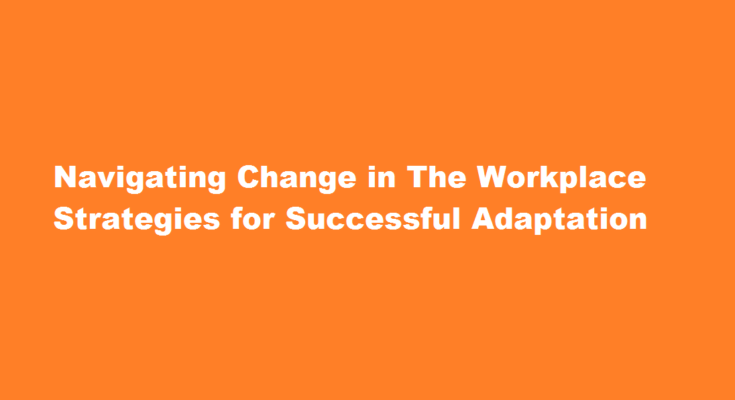Introduction
Change is a constant in today’s fast-paced workplace, and the ability to adapt is crucial for professional success. Whether it’s a new technology implementation, organizational restructuring, or industry shifts, employees must learn to embrace and navigate change effectively. This article explores practical strategies and insights on how to adapt to change in the workplace, enabling individuals to thrive amidst evolving landscapes.
Embrace a Growth Mindset
Adapting to change begins with cultivating a growth mindset—a belief that abilities and skills can be developed through dedication and hard work. Embrace the idea that change presents an opportunity for personal and professional growth. View challenges as learning experiences rather than insurmountable obstacles. This mindset empowers individuals to approach change with a positive and open attitude, fostering resilience and adaptability.
Stay Informed and Prepared
Knowledge is power in times of change. Stay informed about upcoming changes in your workplace and the reasons behind them. Seek out information from reliable sources such as company announcements, newsletters, or direct communication with managers or colleagues. Understand how the changes align with the company’s goals and objectives. Additionally, proactively develop new skills or update existing ones to stay relevant in a rapidly evolving work environment. Continuous learning ensures you are prepared to embrace change with confidence.
Communicate and Collaborate
Change often triggers uncertainty and anxiety among employees. Clear and open communication is essential during such times. Seek opportunities to engage in open dialogue with colleagues, supervisors, or HR representatives to voice concerns, seek clarification, or offer suggestions. Actively participate in team meetings, sharing ideas and insights to collectively adapt to change. Collaboration fosters a sense of shared responsibility, boosts morale, and enhances problem-solving capabilities, leading to smoother transitions.
Develop Resilience
Resilience is the ability to bounce back from setbacks and adapt to new circumstances. Cultivate resilience by building a strong support system at work, including mentors, colleagues, or employee resource groups. Engage in self-care practices such as exercise, meditation, or hobbies to maintain emotional well-being. Focus on solutions rather than dwelling on problems, and embrace a positive outlook. Resilient individuals adapt more easily to change, overcome challenges, and inspire others to do the same.
Emphasize Flexibility and Adaptability
In an ever-changing workplace, flexibility and adaptability are invaluable traits. Embrace new methods, technologies, and work processes willingly. Be open to feedback and be willing to adjust your approach based on changing circumstances. Take initiative to learn new skills or take on new responsibilities that align with evolving organizational needs. By showcasing your adaptability, you demonstrate your value as a resourceful employee capable of handling change effectively.
FREQUENTLY ASKED QUESTIONS
What are the 4 stages of adapting to change?
The stages are shock, anger, acceptance and commitment. People’s initial reaction to the change will likely be shock or denial as they refuse to accept that change is happening. Once reality sinks in and people accept the change is happening, they tend to react negatively.
What is the process of adapting to change?
Adapting to change is a skill that allows you to face new challenges and situations as they arise. For example, you may have to shift roles at your company or start a new job that requires you to develop different skills or take on unfamiliar responsibilities.
Conclusion
Adapting to change in the workplace is a skill that can be developed and honed over time. By embracing a growth mindset, staying informed, communicating effectively, cultivating resilience, and emphasizing flexibility, individuals can navigate change successfully and thrive amidst uncertainty. Change brings opportunities for growth, innovation, and professional development. Remember, adaptability is not a one-time process but a continuous journey. By embracing change and acquiring the necessary skills, employees can position themselves as invaluable assets to their organizations in an ever-evolving work environment.
Read Also : Mastering PDF Modifications A Comprehensive Guide



